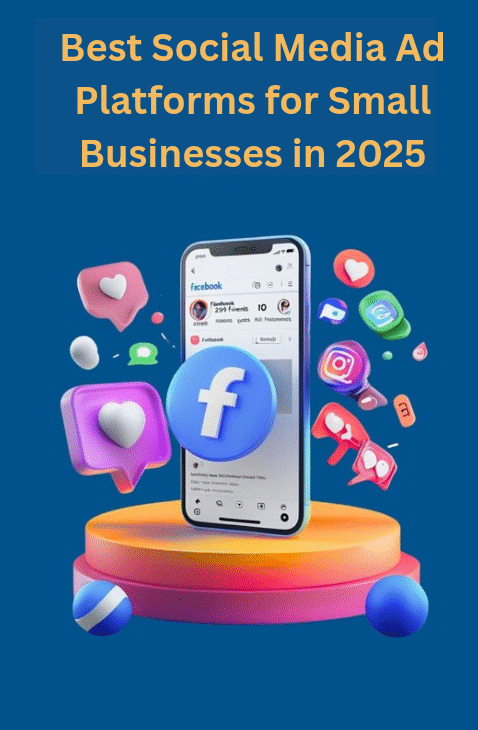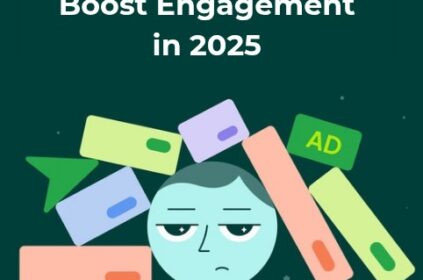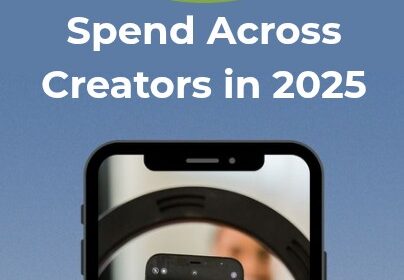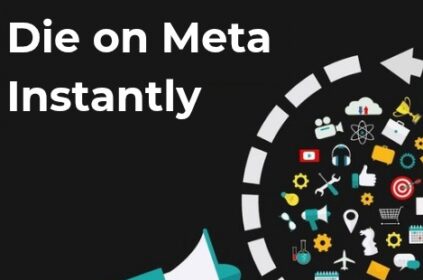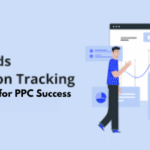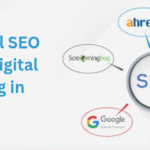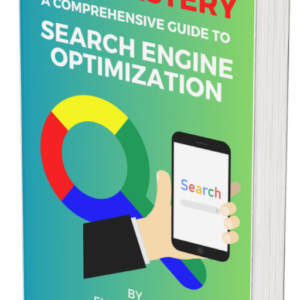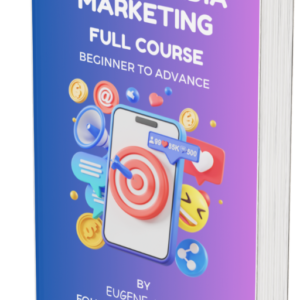Global advertising will cross the US $1 trillion mark in 2025, with more than three-quarters of spend flowing into digital placements . That flood of investment means competition for attention is fiercer than ever.
Yet small teams still win when they anchor budgets to the best social media ad platforms for small businesses—channels that balance precise targeting, transparent costs, and scalable creative.
Because platform algorithms increasingly decide which ads surface, the choice of network now affects profit margins more than headline copy or visuals. However, not every channel will suit every funnel stage.
To help with that, and to make the decision making process easier, this article breaks down 11 networks that consistently outperform peers for reach, intent, and return, while weaving in cost benchmarks, usage trends, and integration tactics.
By the end you will know which platforms align with your objectives and how to deploy them methodically so limited budgets convert predictable revenue.
How We Made Our Picks
Selecting the best social media ad platforms for small businesses begins with measurable criteria rather than hype.
Each network in this guide earned a place by surpassing industry medians in at least three of four dimensions:
#1. Verified intent signals – search queries, purchase history, or deep interests that shorten the path to conversion.
#2. Cost efficiency – stable CPM or CPC ranges plus machine-learning bidding that smooths auction volatility.
#3. Measurement clarity – server-side event support, cross-device attribution, and exportable APIs.
#4. Support ecosystem – educational hubs, partner agencies, and onboarding speed for in-house staff.
Because, when these pillars align, small businesses can forecast spend against contribution margin rather than guess on vanity metrics. The framework applies to each section so comparisons remain apples-to-apples.
#1. Meta Ads (Facebook & Instagram)
Facebook’s user base is expected to exceed 3.1 billion monthly active users by 2027, keeping it the most-used social network in 2025 .
Unsurprisingly, marketers also deploy more budgets here than on any other social site, making Meta the go-to answer when owners ask which platform dominates business advertising.
Conversions API, Advantage+ Shopping, and dynamic catalogue ads combine to turn passive scrollers into purchasers with minimal manual tinkering.
Average click costs remain accessible—roughly $0.26 to $0.30—while CPMs hover near $3 for many objectives.
Because of that balance, campaigns often provide the highest volume of profitable impressions among the best social media ad platforms for small businesses.
Dynamic placements also accommodate the growing share of Reels engagement without extra creative work; 6-second hooks and auto-captions satisfy short-attention habits.
Thus, Meta retains pole position for remarketing and top-of-funnel discovery alike. However, brands should implement server-side tracking from day one, because cookie erosion will only deepen.
#2. Google Ads, YouTube & Discovery Inventory
Search-led campaigns continue to harvest intent no other network can replicate. When a user types “buy noise-cancelling headphones,” the likelihood of purchase is immediate.
Google processes billions of such queries and enables Shopping formats that display price, rating, and shipping directly in the results page.
Combined with YouTube TrueView for Action overlays, Google surfaces an integrated ecosystem from search to video.
Because YouTube reaches more 18- to 49-year-olds than any broadcast network, its scale answers which social media pays the most in 2025 for creators through ad-revenue share, yet advertisers gain similar reach at efficient CPMs near US $4.18 .
Within this environment the best social media ad platforms for small businesses principle shows up again: low-friction Shopping placements, discovery ads on Gmail, and video CTAs all funnel acquisition costs into measurable sales dashboards. Thus, Google properties sit firmly among our 11 picks.
#3. TikTok
TikTok users average 56 minutes daily, and more than half report buying a product after seeing it on the platform. The For You feed’s algorithm emphasises interest clusters over follower counts, giving new brands a chance to scale quickly with Spark Ads that boost organic posts.
Because CPMs often undercut Meta by up to 30 percent during learning phases, TikTok represents a cost-savvy entry point.
The platform’s revenue share is also among the most attractive for creators, which indirectly benefits advertisers through higher quality user-generated content.
Consequently, TikTok joins the best social media ad platforms for small businesses roster, particularly when storytelling and visual demonstrations drive differentiation.
Hook viewers within three seconds, display the product in real-world use, and embed a clear call-to-action; those steps bridge discovery and checkout.
#4. LinkedIn Ads
Although LinkedIn’s CPC frequently exceeds US $5, the network grants unmatched professional targeting—job title, industry, and seniority filters ensure ads reach decision-makers.
Because lead values in B2B contexts dwarf consumer averages, that higher upfront cost still delivers competitive ROAS. Sponsored Content, Conversation Ads, and Website Retargeting integrate seamlessly with CRMs, allowing pipeline attribution down to revenue.
When executives ask which network pays off for enterprise software or agency retainers, LinkedIn surfaces as one of the best social media ad platforms for small businesses in the B2B category, precisely because fewer impressions translate into bigger contracts.
However, allocate budget carefully: start with a single offer, use lead-gen forms to minimise friction, and rely on Insights Tag data to optimise bid strategy based on stage-based conversion rates.
#5. Pinterest & Snapchat
Pinterest users enter the platform with a planning mindset—home décor, meal prep, and seasonal events. Idea Ads remain visible far longer than standard feed placements on most networks, producing a tail of free impressions.
Snapchat, meanwhile, extends reach to younger demographics and introduces augmented-reality try-ons that lift conversion for beauty or apparel by double-digit percentages. Because these channels carry lower competition, CPMs can be a third of Meta’s in certain niches.
That mix of intent and cost positions both within the best social media ad platforms for small businesses when product discovery hinges on visuals or when brands need to diversify beyond saturated duopolies.
#6. Reddit, Quora & Emerging Niches
Reddit communities and Quora threads deliver context-heavy environments where expertise wins attention.
Ads placed within relevant subreddits or answer feeds resonate because users already discuss the problem your product solves. CPMs start around US $1 on inventory outside the top 100 communities, letting experiments run cheaply.
While scale is smaller, the relevance score compensates, especially for software, gaming accessories, or enthusiast hobbies.
Consequently, these niche forums round out the best social media ad platforms for small businesses list, providing pockets of high engagement where mainstream networks become cost-prohibitive.
Budget Benchmarks and Cost Trends for 2025
Average Facebook click costs sit between $0.26 and $0.30, with impressions costing as little as $1.01 per 1 000 views depending on objective.
TikTok CPMs gravitate near US $3.95 after algorithm stabilisation, while YouTube in-stream averages US $4.18 for broad demographics .
LinkedIn remains premium at more than US $5 per click, but high contrast values offset that. To avoid overspending, owners should set contribution-margin targets: if fulfillment and product costs consume 60 percent of a sale price, acquisition spend must remain under 30 percent to preserve profit.
The smartest approach is phased scaling—prove channel economics on a small budget, feed conversion data back to the algorithm, then expand once CPA stabilises.
This mindset embeds the best social media ad platforms for small businesses ethos into financial controls rather than slogans.
Global digital spend will hit roughly US $679 billion this year, and social placements alone are forecast to climb 9.2 percent, reflecting sustained advertiser appetite despite economic headwinds.
Because ad auctions price dynamically, set bid caps early, monitor frequency, and apply creative rotation every two weeks to combat fatigue.
These hygiene practices let you navigate 2025’s rising costs while still extraction efficiency from the best social media ad platforms for small businesses.
Integration, Attribution, and Data Hygiene
Cookie loss across browsers makes server-side event tracking mandatory. Meta’s Conversions API and Google’s Enhanced Conversions hash customer emails before transmission, complying with privacy frameworks while sustaining match quality. TikTok Events API performs a similar role for mobile audiences.
Because attribution windows continue to shrink, small businesses should pipe events into a warehouse—BigQuery or Snowflake—then return conversion feedback via post-back URLs.
This closed loop supplies the bid algorithms of the best social media ad platforms for small businesses with high-integrity data, ensuring spend flows to campaigns that generate incremental revenue.
Moreover, unified reporting surfaces cross-channel overlap: if TikTok assists Facebook final purchases, allocate budget based on blended ROAS rather than last-click metrics.
However, avoid double-counting: configure deduplication rules so a sale registers once across all dashboards.
Conclusion
The best social media ad platforms for small businesses are seldom identical from one brand to the next.
Meta Ads offers the broadest reach and remains the most used channel for paid marketing, while Google’s search and Shopping formats capture intent at the moment of need.
TikTok drives discovery at scale with favourable CPMs; LinkedIn unlocks high-value leads; Pinterest, Snapchat, Reddit, and Quora provide cost-efficient diversification where niche communities gather.
Because each platform excels at a specific funnel stage, a portfolio approach—backed by rigorous attribution—beats chasing silver bullets.
Test one or two networks that solve your immediate growth bottleneck, implement server-side tracking, and expand only after unit economics meet targets.

